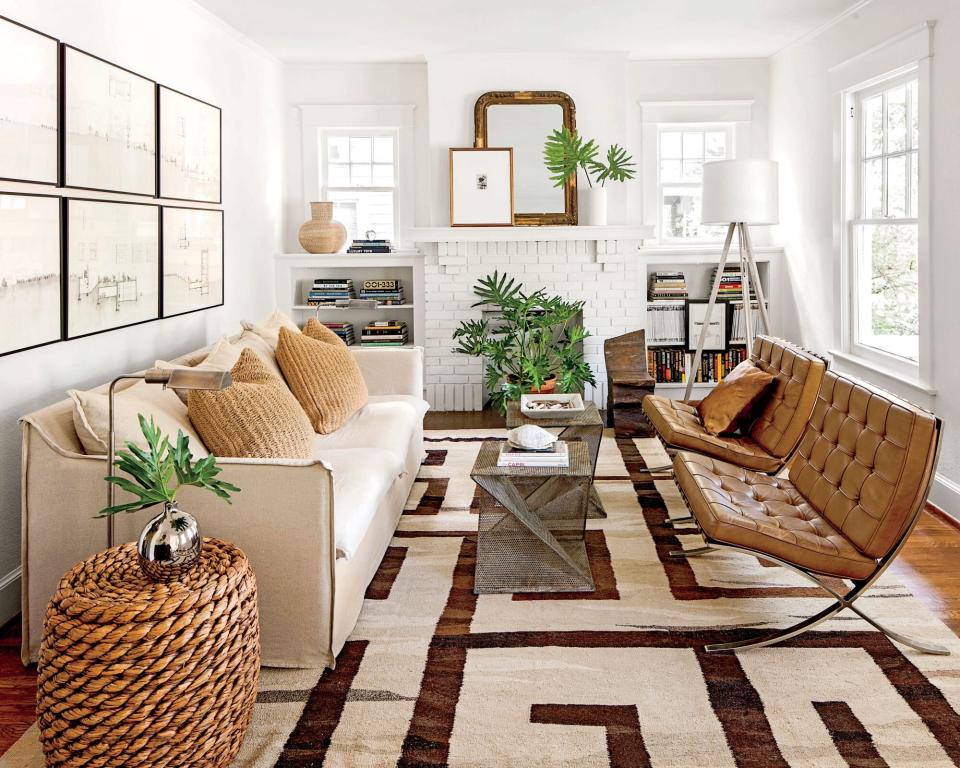Paint Color Trends To Avoid If You Want Your Space To Seem Bigger
While many folks continue to pine after tiny houses, there are probably more of us looking around our spaces and wishing they were just a bit bigger. If that sounds familiar—or if you're one of the people regretting downsizing to a tiny house—there are a few ways to make a room seem bigger and all they require is a little elbow grease and a trip to the paint store.

Laurey W. Glenn
Steer Clear of Dark Shades
Aubergine and brown may be big paint trends this year, but they may not work for small spaces. Instead, the easiest way to make a room feel bigger is by opting for white paint, particularly those with eggshell or satin finishes that can help reflect the light, creating the appearance of even more space. If you want to test out the paint trend, those darker shades could be great for a room with less light, like a powder room.
Choose the Perfect White
Picking the right paint color can be a challenge and that is even true for white paint, which comes in an astonishing array of options. One of our top choices for white paint is a soft shade with warm undertones that will naturally reflect the light, adding brightness without looking sterile. Whatever color you choose, be sure to test white paint in the space it will be in to see how it reacts to the light and shape of the room.
Try Another Neutral
While white is the most obvious small-space paint solution, lighter neutral shades (like a pale lavender) or cooler tones, could give a hint of color while still making a room feel airy.
Avoid Dark Paints on the Ceiling
While a brown ceiling with terracotta walls may look good in a larger space, it can make a small ones feel claustrophobic. Instead, continue a light color palette to the ceiling. Painting the ceiling the same color as the walls can help create the illusion that the room is bigger than it is. If you're really up for a challenge, over at Martha Stewart Living, an interior designer suggested "extending the color of your wall up a few inches onto the ceiling" to "create the illusion of a taller tray ceiling." Just paint a few inches of color up the walls and on to the ceiling, then, "paint the remaining inside of the ceiling white."
Keep Trim Colors Light
Similarly, dark trim on lighter walls is an elegant choice for a good-sized room, like this Tennessee bedroom, it may not work in smaller ones. If you want to make your room feel larger, try painting any trim, including windows and floorboards, the same color as your walls. This easy trick helps create the illusion of more height while also presenting the eye with one continuous, borderless surface. When window trim, floorboards, or crown moldings are a different, darker color than the walls and ceiling it can grab the eye, drawing attention to the room's borders and small dimensions.
Commit to One Shade
It's that same idea that explains why a trend to avoid in small spaces is painting part of a wall (or opting for brightly-hued cabinetry or wallpaper) with a bright color. Painting a wall all the same tone gets rid of that visual distraction.
Skip Strong Hues
Keep in mind that saturated or bright colors will make your space feel smaller. While that coziness may be ideal for some rooms, if you don't want it to feel like the walls are closed-in, opt for light, airy tones.
That said, design is a deeply personal choice. If you like bright walls in your small space—go for it! The most important rule in interior decorating is that you create a space you love.

